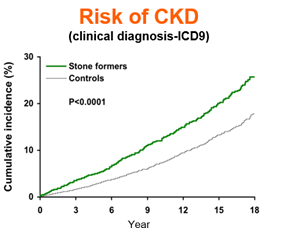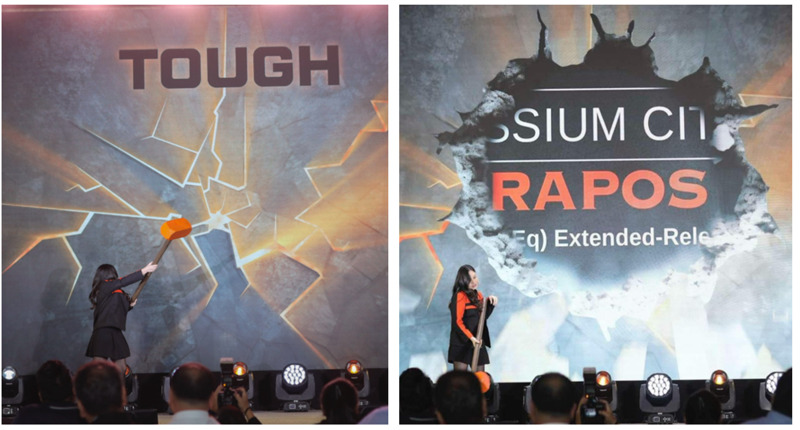
Expert panel discussion with from left: Dr Arturo Castro, Jr., Dr Lynn Gomez and moderator Dr Dennis Fuentes
Recognizing the need for tougher solutions against tough challenges, Corbridge Group Philippines, Inc. launched its latest product, Citrapos XR with a scientific symposium entitled Tougher than Tough: The Potassium Citrate Solution. The launch of Potassium Citrate (Citrapos XR) 15mEq, an extended-release formulation of potassium citrate, is a major step in the company’s commitment to providing bigger, stronger and tougher solutions for kidney stones.
Almost 300
medical practitioners gathered at the Conrad Manila hotel on 20 September 2024,
to hear expert lectures from Dr Lynn Gomez, Director of the Asian Hospital and
Medical Center Transplant Program; and Dr Arturo Castro Jr, Chairman of the
Department of Surgery of The Medical City, South Luzon. Dr Dennis Fuentes,
Medical Director of the Nephrology Center of Bacoor Cavite moderated the event.
Ms Kristine
V. Domingo, Group Product Manager, welcomed the attendees with a warm and
reassuring opening message. While acknowledging that kidney stones can cause
big problems despite their small size, she emphasized that no stone, whether
big or small, would get in the way of Corbridge’s commitment to dissolve and
prevent renal stones, improve patient quality of life and restore hope by
making tougher pharmacologic solutions available for the toughest medical
situations.
Kidney stone
disease management
Dr Gomez
started her lecture with an overview of the evolution of the clinical burden of
kidney stones, starting as a simple urologic condition and potentially leading
to chronic medical conditions like chronic kidney disease (See Figure 1).1,2
 Figure 1. Risk of chronic kidney disease over time in kidney stone forming patients and non-stone formers.
Adapted from: Rule AD, et al. Clin J Am Soc Nephrol 2009;4(4):804-811.
Figure 1. Risk of chronic kidney disease over time in kidney stone forming patients and non-stone formers.
Adapted from: Rule AD, et al. Clin J Am Soc Nephrol 2009;4(4):804-811.The current prevalence of kidney stones is 12 percent worldwide. Mostly affecting people in their prime productive years, the burden of kidney stones on patients, families and healthcare systems, is further magnified in both local and global contexts.1,2
 Dr. Lynn Gomez Director, Asian Hospital and Medical Center Transplant Program
Dr. Lynn Gomez Director, Asian Hospital and Medical Center Transplant ProgramDr Gomez noted that the formation of kidney stones is a complex interplay of physical chemistry and molecular cell biology. Risk factors like dietary composition, systemic and local diseases, and even environmental factors like temperature can all affect formation of stones through their effects on the balance between stone-inhibiting and stone-promoting factors. Further, the formation of calcium oxalate stones – the most common type of kidney stone – is associated with a variety of genes and renal phenotypes.3,4
Dr Gomez also underscored the fact that recurrence is the rule after the first stone, with a recurrence rate of up to 50 percent in 5 years, making prevention a key medical management goal.5 The crucial importance of a thorough evaluation that includes risk identification, assessing general medical conditions, and review of medications, in addition to kidney and stone studies,6 was also highlighted, as was the importance of general preventative interventions that are often overlooked.4
Potassium citrate
Citrate forms soluble complexes with calcium, lowering its urinary saturation. Together with its direct effect of inhibiting the crystallization of calcium salts, it helps prevent calcium stone formation. In addition, it helps alkalinize the urine that sets an environmental pH that is unfavorable to stone formation.7
Some key benefits of potassium citrate include:8-11
• reducing kidney stone formation
• preventing further kidney stone growth
• reducing rates of stone recurrence
Dr Gomez also tackled the intricacies of citrate “dietotherapy” and focused on the different effects of citric acid and citrate in stone formation.9 She described how potassium citrate significantly increases citraturia and urine pH while marginally lowering calciuria. This stone-inhibiting activity was not seen with citric acid, despite the similarity in citrate content.12
In closing, Dr Gomez reviewed the recent recommendations for long-term and follow-up care of patients with kidney stones, and highlighted knowing when to refer for surgical interventions.7
Surgical management of nephrolithiasis
Dr Castro opened his lecture by emphasizing important factors that should influence the decision to do surgery. These include patient factors, as well as stone factors like size, hardness, location, degree of obstruction, and local anatomy involvement, which should be determined with tests like a CT stonogram.
 Dr. Arturo Castro Jr Chairman, Department of Surgery, The Medical City, South Luzon
Dr. Arturo Castro Jr Chairman, Department of Surgery, The Medical City, South LuzonHe then proceeded to discuss the indications, contraindications , advantages and disadvantages of surgical options for kidney stone removal, including: · open stone surgery · shockwave treatment · laser lithotripsy · percutaneous nephrolithotripsy.
 Citrapos XR Reveal
Citrapos XR RevealExpert panel discussion
The scientific session concluded with an engaging panel discussion moderated by Dr Dennis Fuentes, focusing on kidney stone issues encountered in local clinical practice. The topic of appropriate care for pyelonephritis accompanying kidney stones started an insightful discussion with the experts emphasizing that it is an emergency in nephrology due to the threat it poses to kidney function. In these cases, hospitalization and intravenous antibiotics are mainstays and surgery may be needed.
Concerns regarding the long term-use of potassium citrate were also raised, and the speakers reassured the audience that long-term use is safe, but patients should receive adequate follow-ups. This is especially true for patients with a high risk of hyperkalemia.
Finally, the panel discussed the use of potassium citrate in special populations like pregnant patients and patients with solitary kidneys. In these cases, potassium citrate can still be useful for dealing with kidney stones, but physicians should always take care to weigh the benefits of treatment with potential risks to the patients.
Conclusion
Kidney stones affect a large number of people all over the world and can transform from a discrete medical issue to a recurring health problem that requires careful management. Physicians should take care to not only treat present kidney stones, but also manage the risk of recurrence. Thankfully, this tough health issue has a range of tougher solutions, including surgical procedures and effective medications like potassium citrate.

